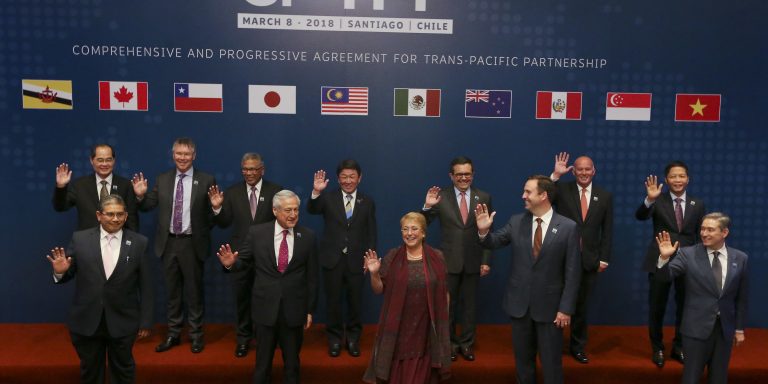INTELBRIEF
April 17, 2018
IntelBrief: The Pacific Pivot

- In January 2017, President Trump withdrew the United States from the Trans-Pacific Partnership (TPP).
- The U.S. originally pushed for the TPP in order to more comprehensively engage China on trade, an issue increasingly important for the Trump administration.
- Japan took the lead in the negotiations once the U.S. pulled out and sees the TPP as not just a significant trade achievement but also a badly needed check on Chinese expansion.
- President Trump’s style of tweeting to name and shame countries about foreign policy decisions will make it more difficult for leaders of the TPP signatories to move towards the U.S. position on the TPP.
.
A signature campaign promise by then-candidate Donald Trump was to walk away from the Trans-Pacific Partnership (TPP), the largest regional trade agreement in history. One of his first actions as president was to do just that, signing an executive order to that effect on January 23, 2017. The deal had already run into serious trouble in Congress, but the United States fully walking away from it led to other countries publicly stating it was time to rely less on the U.S. China exploited the issue to its advantage, with Chinese state media claiming the U.S. had ‘reached its limits’ in response to its TPP withdrawal.
However, the U.S. appears to be pivoting yet again toward the Pacific. During an April 12 White House meeting of governors from U.S. farm states, President Trump stated the U.S. was looking into rejoining the TPP, a truly remarkable off-the-cuff statement. Those governors represent states the most likely to be financially harmed by the TPP reversal as well as Trump’s trade war with China. The president’s top financial adviser, Larry Kudlow, told the New York Times later that day that ‘this whole trade thing has exploded.’ President Trump then qualified his earlier statement with a tweet saying the U.S. would only consider rejoining the TPP if its terms were ‘substantially better’ for the U.S.
Rejoining the TPP is going to be difficult if not impossible for the U.S., especially as the countries who are current signatories have already agreed on their own terms and conditions. In response to the surprise statement by the U.S., Japan’s chief cabinet secretary for Prime Minister Shinzo Abe issued a statement that the TPP was ‘a well-balanced pact,’ one that already met the needs of the 11 countries that embraced the trade agreement. The TPP countries now have the leverage in terms of renegotiations. Japan took the lead in the negotiations once the U.S. pulled out and sees the TPP as not just a significant trade achievement but also a badly needed check on Chinese expansion.
That the U.S. government is even considering an attempt to join the TPP—as is often the case with public statements made by the President it is unclear if it will lead to an official policy decision—is a sign that it might be rethinking its recent hardline rhetoric with China over trade. The TPP was, in large part, initiated by the U.S. to help counter the growing influence of China across the Pacific region. Trade negotiations between the U.S. and China have always been fraught. The TPP was supposed to assist in a more strategic approach to dealing with China on trade and related economic issues.
.
For tailored research and analysis, please contact: info@thesoufancenter.org
[video width="960" height="540" mp4="https://thesoufancenter.org/wp-content/uploads/2018/04/Final-Edit-1-174.mp4" poster="https://thesoufancenter.org/wp-content/uploads/2018/04/AP_18067691643420.jpg"][/video]